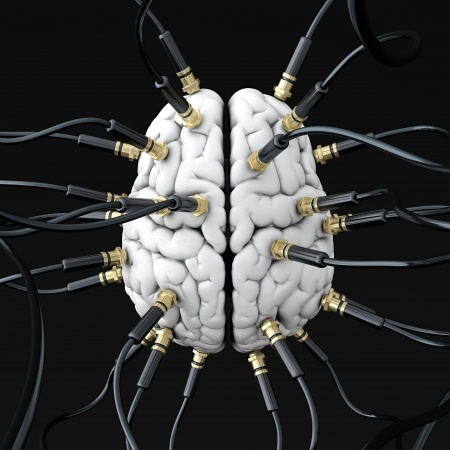
Why Personal Development Is a Leader’s Top Priority

The late Jim Rohn, one of the great authorities on personal achievement, explained how he went from being an Idaho farm boy to being a business man who was offered multi-million-dollar contracts. His secret:
“Learn to work harder on yourself than you do on your job.”
This one piece of advice is so important that if you don’t follow it, your chances for long-term success in your career and in your life are greatly diminished.
You need to be strong as a person to be an effective leader and have the greatest positive impact.
This means, while you’re putting out fires and managing the people on your team, you have to constantly work on who you are.
You can absorb enormous amounts of information about managing others and responding to tough situations. But applying this knowledge can be really challenging. That’s because the world you live in is a constant barrage of obstacles and setbacks. It takes grit, determination and a host of other inner strengths to follow through and actually implement what you learned.

So you have to be smart, and you have to be strong—at the core of who you are.
But this isn’t easy, for two reasons:
#1 – The core strengths you need aren’t formally taught in schools.
You acquire strengths like courage, perseverance, self-discipline, effort, responsibility and integrity through life experience, but usually not in a systematic way. If you were lucky, you got valuable guidance from your parents, teachers, coaches and other adult mentors.
Mostly likely, though, you didn’t always have positive role models. Some of what you absorbed along the way was the wrong stuff—habits that don’t help you now when the going gets tough.
It would be nice if you could hit a “delete” key in your brain and erase the habits that get in your way – and simply replace them with the strengths you need.
But that’s not how it works in the real world.
#2 – Your brain is hard-wired from years of programming.
Your brain doesn’t distinguish good input from bad input. It doesn’t protect you from yourself. It doesn’t say, “Uh, Chuck, my man, I’m afraid I can’t program that for you. It’ll get you in trouble down the road.”
No, when you repeat a behavior often enough, your brain just goes ahead and ingrains it as a habit.

So you could end up with an addiction. Or act like a jerk. Or avoid conflict situations with customers, employees and loved ones.
And it’s because, over time, your brain cells made actual physical connections and formed the networks in your brain that enable your behavior. In a very real sense, your current way of doing things is hard-wired.
A super highway analogy
Think of a habit you have now that’s causing problems for you.
It’s a lot like a familiar, well-traveled road. After so many years of practice, the turns and stops are practically automatic. But at some point you realize that the route you’ve been taking has some potholes. It’s actually holding you back and slowing you down.
So you decide to make a change and try something that works better.
This is like trying to build a brand new super-highway. The construction is going to take time because you’re starting with a dirt road. It’s going to be a bumpy, rough ride at first because the new behavior feels awkward.


That means, when you try to change a habit, at first your results may get worse before they get better. Sometimes you’ll forget what to do. Or you’ll make mistakes. You can end up feeling awkward, disappointed and frustrated.
In order to get to that efficient road, you have to persist through the construction phase. You literally have to rewire your brain by creating new connections, and this takes time. It could be weeks or months, depending on the complexity of what you’re trying to change. Progress can be slow and uncomfortable. When setbacks happen, you’ll be tempted to go back to the route you know so well.
And that’s exactly what happens with many leaders.
When a new approach seems too hard, they revert to using the familiar habit. They know what they should be doing and they know the old way causes issues, but they aren’t willing to pay the price to change.
So how do you ever get from that dirt road to the superhighway?
To break out of your comfort zone, you’ve got to have a strong commitment to your development – to work on yourself until you’ve achieved the change you want to make.
You have to be willing to experience discomfort as you move from conscious competence – knowing what to do – to unconscious competence – being able to do it automatically. If you just stick with it, the brain will rewire itself and you’ll eventually stop using the old road altogether.
Following these three steps will help you get through the awkward construction phase.
STEP 1 – FOCUS
Most leaders have a lot of irons in the fire. Managing massive action on multiple fronts can bring you fantastic results.
But that approach doesn’t work when it comes to your own development. You can’t attack several personal changes simultaneously if you want them to become permanent. Your brain just doesn’t work that way.
Instead, you need to have a laser focus. Take a good hard look at yourself and identify the ONE thing that keeps tripping you up. These few questions may stimulate your thinking…
- Do you constantly chase bright shiny objects that distract you from your top priorities?
- Are you hesitant to approach others who could help you move forward in your career because you lack self-confidence?
- Do you give up at the first sign of rejection or resistance?
- Do disappointments and setbacks put you in such a funk that you lose momentum for days or weeks?
- Do you tend to wait for things to come to you instead of taking initiative?
If you’re not sure what you need to work on most, just ask the people who know you well. They can see what you can’t. Be gracious when you hear the truth about yourself – and thank them for their honesty.
STEP 2 – TAKE ACTION
Once you identify what to work on – and find out how to do it right – it’s time to take action. You’ve got to apply what you learn – on the job and at home.
And not just once or twice. Dozens or even hundreds of times. Remember, you’re creating new physical connections in your brain. It takes a lot of repetitions and practice to build that super-highway.
STEP 3 – REFLECT
You accelerate the process when you take time to think about what you learned each time you try the new behavior.
You think I’m kidding, right? With everything going on in a busy leader’s life, who has time to stop and reflect on what’s happened?
Actually, YOU do…or else you’ll keep repeating the same mistakes and never learn from them. That’s what often happens. People go from one thing to another without taking away the lessons from each experience.
So what exactly should you think about? What does “reflection” look like?
Take a few minutes to ask yourself these 5 key questions after each experience, and you’ll be astonished at the insights you get.
1 – What happened?
2 – Why did it happen that way?
3 – What were the consequences?
4 – What will you do differently in the future?
5 – What are your next steps?
If you commit to implementing this cycle of focus-action-reflection as you work on your personal development, you will re-wire your brain. You’ll build the strengths you need to prevail in the competitive and demanding world of a leader.
“Ever since I was a child I have had this instinctive urge for expansion and growth. To me, the function and duty of a quality human being is the sincere and honest development of one’s potential.” – Bruce Lee
ABOUT THE AUTHOR
Meredith Bell is co-founder and President of Performance Support Systems (PSS), a global software company that publishes 20/20 Insight GOLD, an award-winning 360 feedback and survey system, and Strong for Performance, an online coaching system for personal and professional development. Learn more about how you can use these tools to help the leaders you work with and get the free guide, "The 5 Secrets to Getting Better at Anything." Connect with Meredith on LinkedIn.
